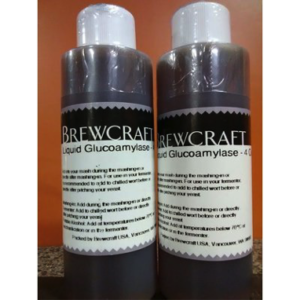-Ryan Blankenship-

Enzymes have been used in beer production for some time now, whether for gluten reduction, turning some non-fermentable sugar into fermentable sugar, or increasing clarity. For brewing, enzymes can, among other things, increase starch liquefaction and saccharification, which in turn increases the production of fermentable sugars. These enzymes can also help reduce viscosity, support yeast during the fermentation process, and even extend the shelf-life of a beer. In this blog, we will discuss two different types of enzymes and what they can for to your homebrew.
One of the more common enzymes used to help reduce gluten in beer would be endoprotease, commercially available as White Labs Clarity Ferm. This enzyme is used after you have made and cooled your wort to pitching temperature. Not only will this enzyme reduce the parts per million of gluten down to below 20 ppm, but will also eliminate the appearance of chill haze. Endoprotease does this by helping to break down the sensitive polypeptides that create chill haze. The only downside I have come across with this enzyme is that since this enzyme is breaking down gluten, it can make your beer come out with a bit less body and can feel a bit thin.
Another popular enzyme that is used a lot in Russian Imperial stouts, or any high gravity beer, is called Amyloglucosidase, commercially available as White Lab’s Ultra-Ferm. This enzyme is used to increase the break-down of dextrins and convert them to glucose. As most homebrewers know, getting a high gravity stout to ferment from 1.200 SG down to 1.008 SG is quite a chore. Either 3 times the amount of yeast must be used, or you might have to pitch some champagne yeast after 3 days of fermentation. Unfortunately, we are still left with a great amount of non-fermentable sugars left behind. Amyloglucosidase will convert those non-fermentables back into fermentable sugars.
One type of beer that has just recently entered the market is the Brut IPA. This beer is created by designing your favorite IPA and adding the Amyloglucosidase enzyme to it during the mash cycle. This enzyme will convert the dextrins into glucose so that all of the sugar can be eaten by the yeast. The result will leave you with a finishing gravity 0 P (1.000 SG) The Brut IPA reminds me of a Brut Champagne with the finish being extremely dry. The hop aroma and bitterness still comes through the finished beer, leaving you with a crisp, refreshing taste.
Here’s a link to a tasty Brut IPA recipe so you can try making one yourself. Cheers!



Leave a Reply